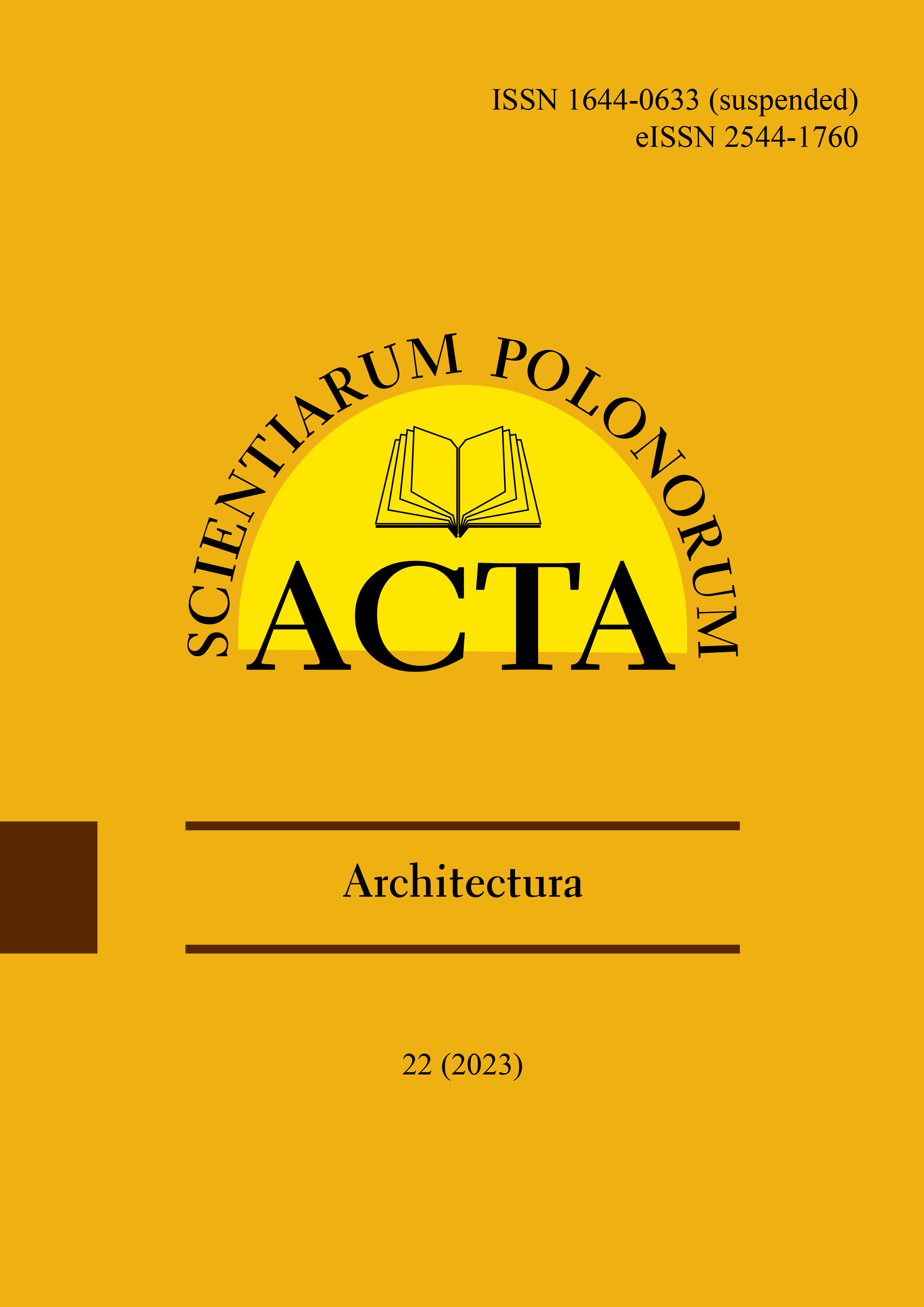Main Article Content
Due to the growing importance of renewable energy sources (RES) technology, a noticeable increase in interest in photovoltaics can be observed. Roofs most often provide the places where photovoltaic (PV) modules are installed. In many cases, ill-considered decisions concerning the selection of PV modules and their installation lead to unfavourable architectural effects. The article aims to examine the possibility of integrating PV modules installed on non-flat roofs with the broadly understood building architecture. An observational method based on case studies was applied to the study. Not only aesthetic aspects but also functional and technical aspects were considered while paying attention to energy issues. The conducted analysis indicates a good level of possibilities for integrating PV modules with architecture and these possibilities vary depending on the geometric features of the roof. Applications within full and glazed roofs are also rather distinctive.
Article Details
ATB Becker (2006). Train the Trainer – workshop training materials. Arsenal Research.
BEAR Architecten (2011). R&D building ECN Petten. Retrieved from: http://bear-id.com/projects/ecn-building-42/ [accessed: 20.02.2023].
Chwieduk, D. (2011). Energetyka słoneczna budynku. Warszawa: Arkady.
Humm, O. & Toggweiler, P. (1993). Photovoltaics in Architecture. Basel–Boston–Berlin: Birkhäuser.
Lucchi, E., Baiani, S. & Altamura, P. (2023). Design criteria for the integration of active solar technologies in the historic built environment: Taxonomy of international recommendations. Energy and Buildings, 278 (1), 112651. (Crossref)
Marchwiński, J. (2022). Fotowoltaika na dachach płaskich – architektoniczne możliwości i ograniczenia [Photovoltaics on flat roofs – architectural possibilities and limitations]. Builder, 5 (298), 20–25. (Crossref)
Milosevic, V. & Marchwiński, J. (2022). Photovoltaic Technology Integration with Tensile Membrane Structures – a Critical Review. Tehnicki Vjesnik, 29 (2), 702–713. (Crossref)
New Energy and Industrial Technology Development Organization [NEDO] (2011). Photovoltaic Architecture Design Guide. Tokyo: NEDO Publishing.
Pieter, J. (1975). Zarys metodologii pracy naukowej. Warszawa: Państwowe Wydawnictwo Naukowe.
Polski Komitet Normalizacyjny [PKN] (1989). Przewody dymowe, spalinowe i wentylacyjne murowane z cegły. Wymagania techniczne i badania przy odbiorze (PN-B-10425:1989). Warszawa: Polski Komitet Normalizacyjny.
Roberts, S. & Guariento, N. (2009). Building Integrated Photovoltaics – a Handbook. Basel–Boston–Berlin: Birkhäuser. (Crossref)
RoofingAdmin (2022, November 29). Award-Winning School With Unique Roof Design Has Minimal Environmental Impact in Roofing. Retrieved from: https://roofingmagazine.com/award-winning-school-with-unique-roof-design-has-minimal-environmental-impact/ [accessed: 15.02.2023].
Shukla, A. K., Sudhakar, K. & Baredar, P. (2017). Recent advancement in BIPV product technologies: A review. Energy and Buildings, 140, 188–195. (Crossref)
Szparkowski, Z. (1999). Architektura współczesnej fabryki. Warszawa: Oficyna Wydawnicza Politechniki Warszawskiej.
Waseed, A. (2014). Tilt and Orientation: A Preference Factor among Photovoltaic Roof Systems. International Journal of Innovative Research in Science, Engineering and Technology, 3 (3), 1750–1758.
Downloads

This work is licensed under a Creative Commons Attribution-NonCommercial 4.0 International License.

